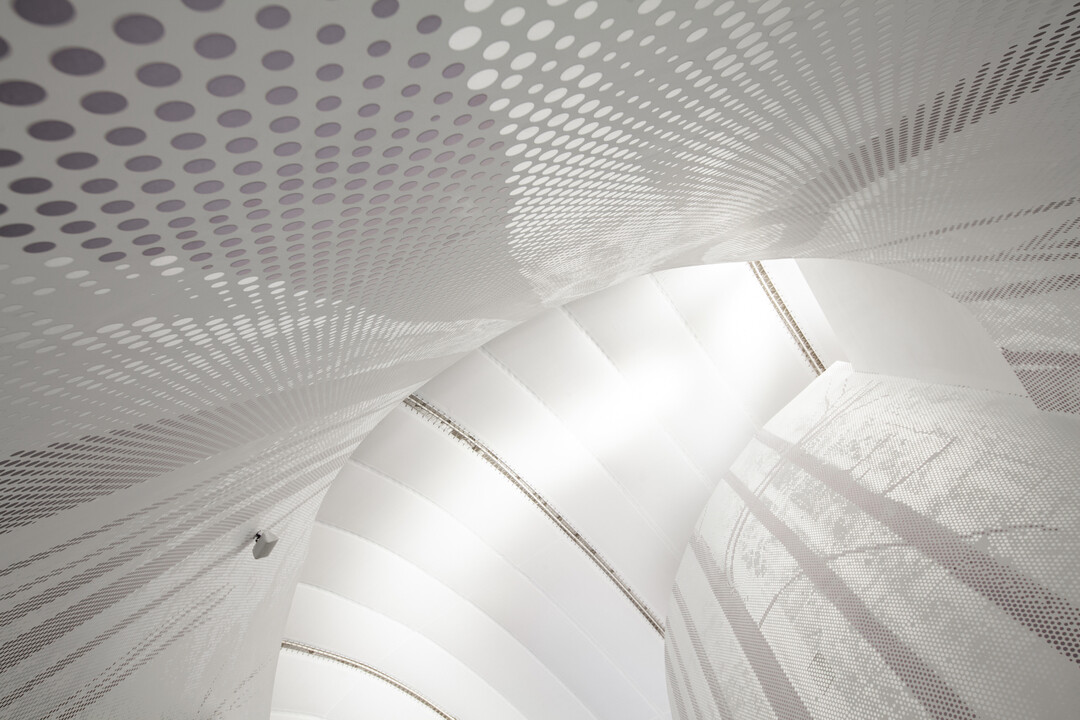
Members Only
Please join as a member and click "Members Only" to read more complete articles and exclusive content.

Please join as a member and click "Members Only" to read more complete articles and exclusive content.
Tribeca 閣樓——鏡子隱蔽所
紐約建築師 Andrea Leung 翻修了一座位於紐約州紐約市1,600 平方英尺(150平方米)大,歷史悠久的 Tribeca 閣樓,而翻修靈感來自她祖母在溫哥華公寓的一處隱蔽空間。Leung在這個特殊高層的比例內置入了一個通透舒適的建築盒子, 該翻修案是在疫情期間完成,當時 Leung 一直住在這個空間裡。Leung 談及該項目的靈感來源時說道:「秘密空間令我深深著迷。 我祖母在頂層公寓的臨時住所裡處處隱藏著這樣神秘的空間。 推開鏡子,一個榻榻米房間隱匿在其後。 光線沿著右側書架,
引領你從昏暗的走廊走進她個人的平靜綠洲。」自 2013 年搬到紐約以來, Leung 就設想將城市公寓改造成一個僻靜的避難所,靈感來自她祖母空間的精髓,但在這基礎上添入自己的品味。 在 Tribeca 一個安靜的角落,她找到了理想的地點:一座可追溯至1864年,歷史悠久的建築。通過一段傾斜的樓梯和一個內襯超大工業捲簾門,來到一個陽光普照的閣樓,銅綠錫天花板由高聳的古董三根科林斯式鑄鐵柱支撐。「一看原始空間,我就清楚地知道我想創造什麼樣的避難所——一個緩緩表現自體的避難所,以它排場驚艷你,接著引起你的好奇心。」
Leung 對這個項目,進行了幾處深刻的改變。 首先,也是最徹底的,她移除了懸掛在公寓的一側的一個狹窄夾層。 然後,她沿著東牆重新規劃了家中的私人房間。一間臥室、更衣室、廚房和兩個浴室都隱藏在一堵長而橫跨整個空間的連續鏡面後方,鏡面闔上時私人區域彷彿在這個空間中消失,只看得到鏡子中映射出來的公共區域。
閣樓寬敞明亮的起居和用餐區,兩側排列著七扇高大的窗戶。這個「鏡面牆」和窗戶的排列相互作用呼應,對 Leung 的設計至關重要:「鏡子的牆壁讓主生活空間超越了它的物理限制,空間看起來面積增加了一倍,而帶有原始波浪形玻璃的寬大窗戶也被反射出來,用柔和的光線沐浴牆壁折射光,」她解釋道。 往臥室裡看,窗外的倒影裡面窗戶的景色相互倒塌,創造了一個瞬間——奇思妙想,內外顛倒。反光表面和隱藏空間貫穿整個空間,增添了一個空靈維度。 臥室後面的胡桃木更衣室營造出帶有溫暖燈光和無限延伸的冥想室。 從起居室,一面鏡子三重雙開門打開後露出主浴室,裡面有一個整體式橢圓形浴缸形塑在柔軟紋理的石頭牆上。 另一組帶鏡面的門通向一個廚房,那是啞光的具象大理石和生鏽的黃銅木製品與閣樓的新寬木板橡木地板相得益彰。在入口通道的滑動隔板後面,第二間浴室被帶有明亮金屬色的大理石紋理包裹著。
在主要的起居/用餐區,Leung 設計了幾件定製作品,它們光澤閃閃的表面使光線在空間中彎曲漫射。 在餐廳,這些黃銅和胡桃木書櫃、餐桌和控制台,其不規則形狀的頂部、腿和門與平衡和支持的概念。 在客廳裡,Leung 在 Steven Harris Architects 為 Barneys New York 定製的黃銅茶几和 Pietro Franceschini 的 Arch Bench建構起有機曲線來對比建築的直線性。「作為一名建築師,我從實現優雅簡單的設計中獲得滿足感而茁壯成長解決方案。」Leung 說,「但更重要的是,這是由美麗所創造的情感驅動我的建築空間。 我總是對表面上的靜態感興趣,材料的紋理可以喚起詩意的張力,訴說我們的思想和記憶,觸及我們潛意識和迅速反應的各個方面,即便我們不一定能夠充分表達。」